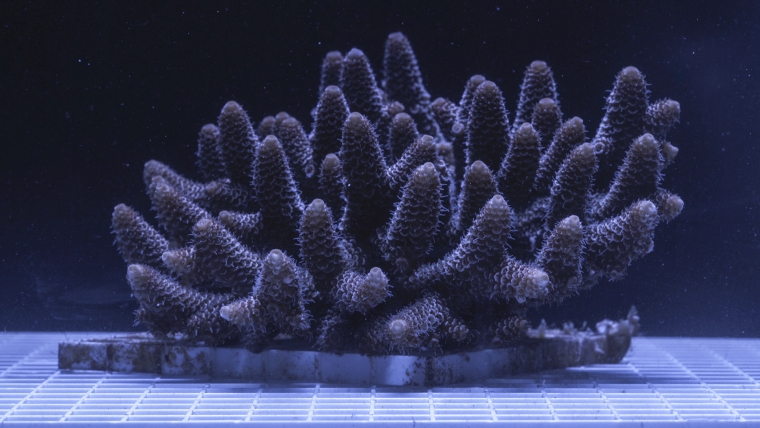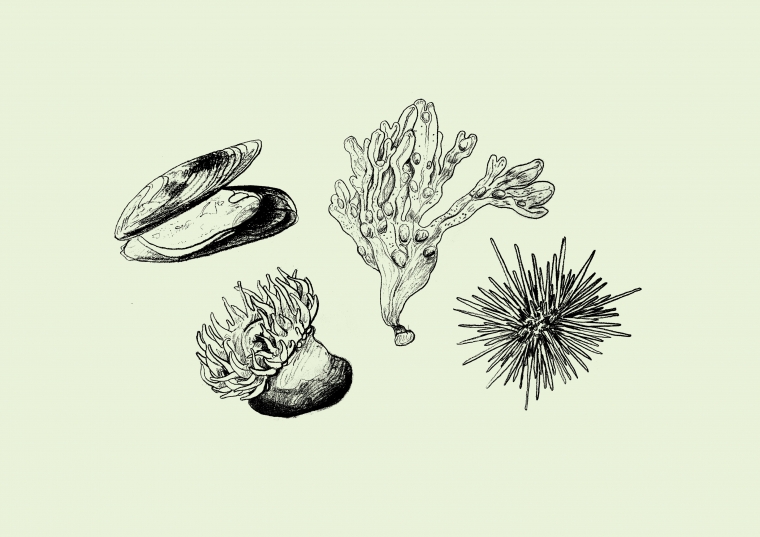The Architecture of the Enclosed Sea Dossier
by Louise Carver
Architecture of the Enclosed Sea. Between Aquaria and Marine Protected Areas explores the architectural, geopolitical and historical resonance of two spatial techniques for knowing and governing marine life in the modern era. The programme compares the respective characters of the aquarium and the marine protected area in ocean cultures and marine conservation. Aquariums are volumetric indoor bodies of water. Marine protected areas are aerial ocean territories spanning tens to tens of thousands of square kilometres. Both serve scientific, political and entertainment purposes; both are used for nature protection and reproduce certain worldviews. What other common stories can be traced along the scale variance of devices that “box the sea”?
“30 by 30” is a distraction
"30 by 30" is a campaign promoted by governments and international wildlife NGOs to expand designated “protected” status to 30 percent of all land and sea areas by 2030. The campaign was conceptualised and driven by the British Government under the direction of its previous environmental minister Michael Gove, a politician who was pivotal in delivering Brexit. "30 by 30" is now supported by an international coalition of large conservation agencies and figures within the UN’s “Decade on the Ocean”. The campaign promotes messaging for the urgent need for more and bigger marine protected areas as the solution to the loss of biological diversity on land and sea. However, Hugh Govan and Mohammad Arju of the ICCA Consortium, which coordinates the protection of land and sea, or Territories of Life, by indigenous peoples and local communities, explain why this blanket, simplistic and top down approach for spatial expansion of marine protected areas is not the answer. In fact, they argue that "30 by 30" is likely to be counter-productive to the efforts to slow and reverse the interlinked biodiversity, climate and inequality crises.
Assembling Enclosures: Reading Marine Spatial Planning for Alternatives
Luke Fairbanks and his co-authors set out how ocean enclosures through marine spatial planning frameworks can be productively read through theories of assemblage. Assemblages are diverse arrangements of narratives, knowledge, technology and tools like maps that come together in dynamic ways to shape situations and governance arrangements, with varying outcomes for people and nature. Assemblages could be said to resemble “architectures” or “infrastructures”, with both material and immaterial parts coalescing in the whole. Fairbanks et al argue that using assemblages to read marine spatial planning and enclosure helps us to see the constituent parts doing this work. It also helps us to see alternative pathways and the possibility for other kinds of socio-ecological arrangements. Reading for difference, the authors suggest, sensitises us to more promising marine governance frameworks and the assemblages, or architectures, which could support them.
A Short History of Enclosure in Britain
Published in 1968, Garrit Hardin’s “The Tragedy of the Commons” is one of the most cited academic papers ever published. It established a stubborn orthodoxy in international development and environmental policy premised on the need to attribute private property rights to protect environmental resources (even after Hardin admitted he got it wrong). The roll out of Individual Transferable Quotas (ITQs) within fisheries policy is but one example of this idea and highlights what Noëlle Boucquey in the companion piece describes as a pre-emptive factor in the third phase of ocean enclosures around the world. In “A Short History of Enclosure in Britain”, Simon Fairlie explores the origins of Hardin’s “pet theory”, which through the Parliamentary Enclosure Acts formed the basis of the enclosure of common lands in the UK from the 16th century onwards. In The Land Magazine, Simon Fairlie’s piece examining the politics of nature and enclosure can be re-thought to fit the politics of watery spaces and marine governance today.
This is an important albeit land-based history of the theory of the “tragedy of the commons” which has come to inform so much environmental management thinking.
Louise Carver
Ocean Data Portals: Performing a New Infrastructure for Ocean Governance
Noëlle Boucquey and her co-authors suggest that we have entered the “third phase” of ocean enclosures around the world, characterised by an intensity of map making for marine spatial planning that geocodifies ocean resources. This paper examines the infrastructure of marine spatial planning via two ocean data portals and applies “theories of ontological politics, critical cartography, and a critical conceptualization of ‘care’”. It examines these “portal performances” to consider the ideological and ontological work these data and mapping infrastructures perform, and how they might do otherwise.
|
Louise Carver is a critical geographer who develops creative and participatory methodologies across policy, research and cultural sectors for transformative knowledge engagements. She holds a PhD in Geography from Birkbeck, University of London in the political economy of scientific knowledge, theories of value and the practices of biodiversity conservation. Her ethnographic research and public interventions explore the science-policy processes of human and environmental systems across land, river and marine contexts, with a specific focus on the political ecologies of “green” and “blue” growth frameworks. She is an Academic Fellow at the UK Parliamentary Office for Science and Technology, affiliated to the Lancaster Environment Centre, UK, a Mentor to the TBA21–Academy Ocean Fellowship and an independent consultant and cultural practitioner. She publishes and lectures internationally and has exhibited collaborative work at the Haus der Kulturen der Welt and the London Design Museum. |
Architecture of the Enclosed Sea. Between Aquaria and Marine Protected Areas explores the architectural, geopolitical and historical resonance of two spatial techniques for knowing and governing marine life in the modern era. The public programme, curated by Louise Carver and developed by maat and TBA21–Academy, compares the respective characters of the aquarium and the marine protected area in ocean cultures and marine conservation. The programme inquires and speculates about the architectures of ocean enclosures at the start of the UN’s “Decade of the Ocean” and it considers the territorial imaginary of enclosed water and the material artefacts which hold it in place, with talks and events that bring to life the dynamics which overflow the fixed boundaries of boxes. |











